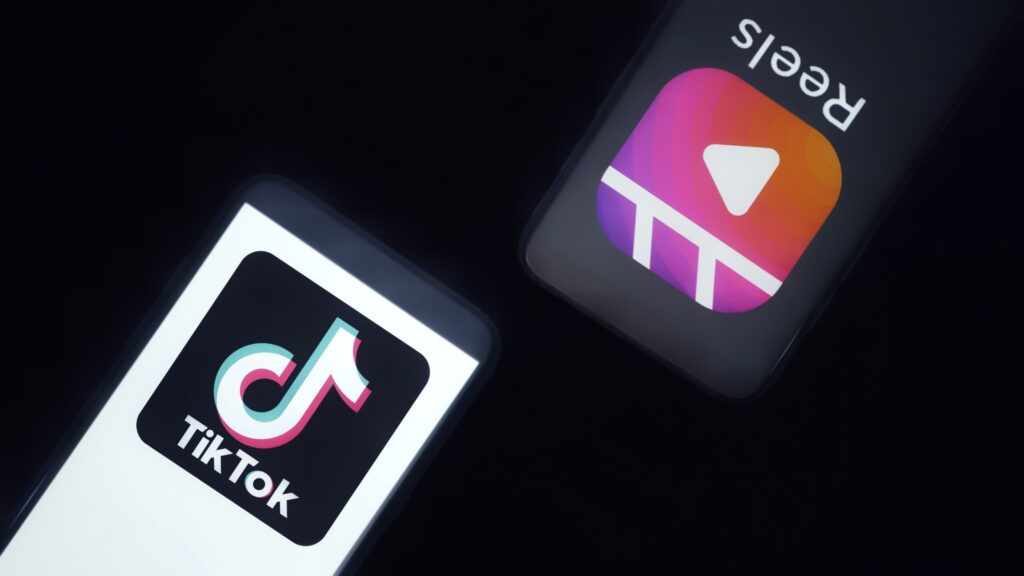Choose the Right Influencers for your Hotel

Table of Contents
The Four-Step Strategy for Effective Influencer Marketing of Hotel Properties
The best tips for integrating influencer marketing into your marketing strategy for Instagram and TikTok
In today’s digital landscape, influencer marketing has evolved into a potent strategy for hotel businesses aiming to authentically connect with their target audiences. Two platforms, Instagram and TikTok, have emerged as frontrunners in this space, thanks to their youthful user bases, which are more open to this kind of marketing communication. With nearly two billion users combined, these platforms offer an ideal canvas for influencer marketing of hotel properties, as they offer engaging content by blending images and videos seamlessly.
According to advertising research, there are strong interaction effects between influencer marketing, advertising, and sales promotions. It is, therefore, apparent that influencer marketing should be included in a broader marketing strategy in order to ultimately lead to conversions.
For that to happen, it is crucial to take the following into consideration when planning an influencer marketing strategy for your hotel:
- Understanding the User: Influencers act as a bridge between your hotel and your target audience. They possess an innate understanding of the audience’s preferences and can communicate in a language that resonates. It is, thus, paramount that the hotel’s target audience’s characteristics (age, interests, location, etc.),lifestyle, values, and other psychological factors must align with that of the influencer’s in order to achieve a successful collaboration.
- Engagement: Merely being a well-known brand is often insufficient to capture user attention. You need to offer users compelling reasons to engage. This necessitates a well-integrated influencer marketing strategy that fits in with your broader marketing objectives.
- Frequency: It is frequently advised that a marketing message must be interspersed across different channels. While working with an influencer to secure a single Instagram post, for example, might be effective in some cases, few are able to turn isolated posts into sales – in the case of hotels, this is booking a room. However, most of the time, repeated exposure to the same content (up to 15) is required, making frequency a crucial factor in the effectiveness of a campaign.
- Platform Selection: Taking all the above into consideration, you must make strategic decisions about which platforms to engage in. Each platform demands distinct skills and resources, and the choice should align with your target audience and brand image. It’s not just about selecting a platform but understanding the user base intricately.
Instagram vs. TikTok: Notable Distinctions
While Instagram and TikTok both play pivotal roles in influencer marketing, they have their unique features. Instagram is considered a more picture-centric medium whereas TikTok is primarily centered around short-form video content, positioning it as an entertainment platform similar to YouTube. This has been challenged by Instagram, however, since the introduction of Instagram Reels, which have made the platform increasingly focus on video content, rivaling TikTok head-on.
Algorithm-wise, the unpredictability of TikTok’s adds an element of surprise for users, making it challenging to predict content success. Sponsored content on TikTok is also less prevalent compared to Instagram, and – even if you do decide to spend some budget on TikTok advertising – you should keep in mind that the targeting options are less broad than those of Meta with the minimum ad spend/day being a minimum of €20.

Choosing the Right Influencers
Once you decide that influencer marketing is going to be a part of your hotel’s marketing strategy and communications, it is time to begin the search for the right people. The pivotal choice of influencers can either elevate or undermine a campaign and you should always keep in mind that the people you choose represent your values and vision for your property and brand. Below are the factors to consider:
- Size vs. Engagement: While larger influencers can help create widespread awareness, smaller influencers often boast higher engagement rates and a more focused follower base. You should consider this based on your strategic objectives – e.g. if you are opting for awareness, a bigger and more well-known influencer might be appropriate – and budget.
- Niche Relevance: It is extremely important to align influencers with your brand’s niche; the closer their niche and content is to your hotel’s, the better. Keep in mind, though, that smaller influencers can shine when it comes to highly relatable content tailored to specific geographic areas.
- Cost Management: Managing multiple influencers can be resource-intensive. That is why you should weigh the costs against your campaign objectives. In many cases, a mix of smaller and bigger influencers might be appropriate but, again, it should be integrated according to your marketing objectives.
- Content Quality: Assess an influencer’s ability to produce high-quality and creative content. Look for uniqueness that sets your brand apart. Caution is advised in this case concerning smaller influencers mostly as they might not have as much expertise creating high-quality content, which restricts businesses’ ability to reuse that material in many contexts. They could also be lacking in imagination, which causes many influencers to produce content that is quite identical.
Celebrity endorsements: Yes or No?
Celebrity endorsements are proven powerful, especially when a hotel’s objective is brand awareness. Being featured on a top celebrity’s social media offers not only massive exposure but also broad appeal to a brand. This, however, comes in complete contrast to what we mentioned earlier about the importance of influencers having their own niche, but, in the case of celebrities this becomes irrelevant because the likeability and recognizability of celebs allow for brands to reach audiences that are both enormous and diverse, which has a direct impact on popularity gain.
Panadvert is proud to have collaborated with an array of prominent celebrities, who became known from some of Netflix’s top streamed series, for the promotion of our clients’ properties in Greece. More specifically, we have brought Spanish actress Úrsula Corberó, who you might recognise as “Tokyo” from her part in the popular series “La Casa De Papel” (“Money Heist”) on behalf of clients in Athens, Santorini and Mykonos; Spanish actor Asier Etxeandía, who is known for his leading role in the popular Netflix series “Sky Rojo”, as well as, his award-winning performance in Pedro Almodovar’s “Pain & Glory”, for clients in Athens and Santorini; and, Spanish actress Mina El Hammani, who became popular for her role in the hit Netflix series Élite, for clients in Santorini.
All of these endorsements yielded incredible results for our clients with hundreds of thousands of views for the content they posted featuring their properties and thousands of new followers on their respective social media profiles. In the case of Úrsula Corberó, those numbers were in the millions – indicatively, 4 posts that were published on her Instagram account attracted a whopping 1,406,465 likes, while 7 stories that were created by Úrsula herself gathered a total of about 7 million views.




Balancing Control and Creativity
Once you have chosen the right influencers to communicate your messages to their audience, it is only natural to want to be in control of what is said and shown by them since this is your property they are talking about. Achieving the right balance between brand control and influencer creativity, however, is key to the success of your collaboration. In the case of Instagram and TikTok, especially, too much control is more often a bad than a good thing. So, keep the following in mind when you commit to a collaboration with an influencer:
- Creative Briefings: Briefings for creative work are still required; they make sure you will have the material you want and influencers will concentrate on the proper aspects, such as displaying the hotel that should be advertised rather than themselves enjoying the beach in front of it. Instead of imposing strict controls, though, it is better to provide them with guidelines to ensure they focus on the right elements while delivering the desired content.
- Approval vs. Control: In many instances, approving content before publication proves more efficient than trying to control content production from the outset. Approval is also essential for your business in order to verify the information communicated and avoid potential legal liabilities and inadvertent misuse of a product or property space in their content.
Measuring Success
Of course, everything mentioned in this article would be in vain if you do not monitor the performance of the influencer collaboration with specific KPIs that you decide when planning out your strategy. There are several KPIs to choose from but you should always take into account the specific objectives of your campaigns. Some of the most common ones include:
- Conversions: The ultimate goal of any marketing campaign is to drive growth and sales. Track conversions by monitoring sales changes before, during, and after the influencer campaign. Utilize affiliate links, UTM parameters, promo codes, landing pages, and link tracking for a more sophisticated approach.
- Referral Traffic: Monitoring the traffic generated by the campaign is vital. It helps assess the campaign’s reach and overall success. Analyze metrics such as new visitors, referral sources, total page views, and time on site to gauge success.
- Reach and Awareness: Influencers provide access to a broad audience, making it essential to measure reach and awareness. Track impression data on various posts and content created for the campaign. Compare new versus return visitors during the campaign.
- Audience Growth: While reach and traffic are important, audience growth focuses on successfully bringing individuals into your brand’s fold. Monitor the growth of followers on social media and prospects on your email list during the campaign.
- Engagement: Engagement KPIs provide insights into how well the campaign was received. Measure actions such as likes, reactions, shares, comments, clicks, and mentions. Calculate the cost per engagement (CPE) to assess ROI and budget requirements for future campaigns.
Conclusion
Arguably, the most critical decision in any influencer marketing campaign is selecting the right influencers. Companies should seek influencers committed to the long-term, who bring professionalism and dedication to their collaborations. By following these steps and carefully curating influencer partnerships, your hotel brand can harness the power of Instagram and TikTok to create authentic, effective marketing campaigns that deeply resonate with your target audience. Balancing creativity and control ensures a seamless partnership, and diligent verification guarantees your brand’s integrity is maintained, ultimately leading to influencer marketing success.
Bibliography
DMI (2018). “5 Essential KPIs for Your Influencer Marketing Campaign” | Digital Marketing Institute.
https://digitalmarketinginstitute.com/blog/5-essential-kpis-for-your-influencer-marketing-campaign
Dost, F., Phieler, U., Haenlein, M., & Libai, B. (2019) “Seeding as Part of the Marketing Mix: Word-of-Mouth Program Interactions for Fast-Moving Consumer Goods,” Journal of Marketing, 83(2), pp. 62-81.
Duncan, T., & Caywood, C. (1996) “The Concept, Process, and Evolution of Integrated Marketing Communication,” Integrated Communication: Synergy of Persuasive Voice, ed. Esther Thorson and Jeri Moore. pp. 13-34. Mahwah, NJ: Lawrence Erlbaum
Haenlein, M., Anadol, E., Farnsworth, T., Hugo, H., Hunichen, J., & Welte, D. (2020) “Navigating the New Era of Influencer Marketing: How to be Successful on Instagram, TikTok, & Co.” California Management Review, 63(1), pp. 5–25. https://doi.org/10.1177/0008125620958166
Luxton, S., Reid, M., & Mavondo, F. (2014) “Integrated Marketing Communication Capability and Brand Performance,” Journal of Advertising, 44(1): pp. 37-46.
Reid, M., Luxton, S., & Mavondo, F. (2005) “The Relationship between Integrated Marketing Communication, Market Orientation, and Brand Orientation,” Journal of Advertising, 34(4), pp. 11-23.
Paros: An In-depth Destination Analysis
A data-driven look at Paros’ tourism trends, demand growth, and the factors that make it a gro
Halkidiki: An Extensive Destination Analysis
A data-driven look at Halkidiki’s tourism trends, demand growth, and the factors that make it a st
Top Digital Trends in Hospitality for 2025
Table of Contents Introduction As we close out yet another transformative year, we are proud to mark



